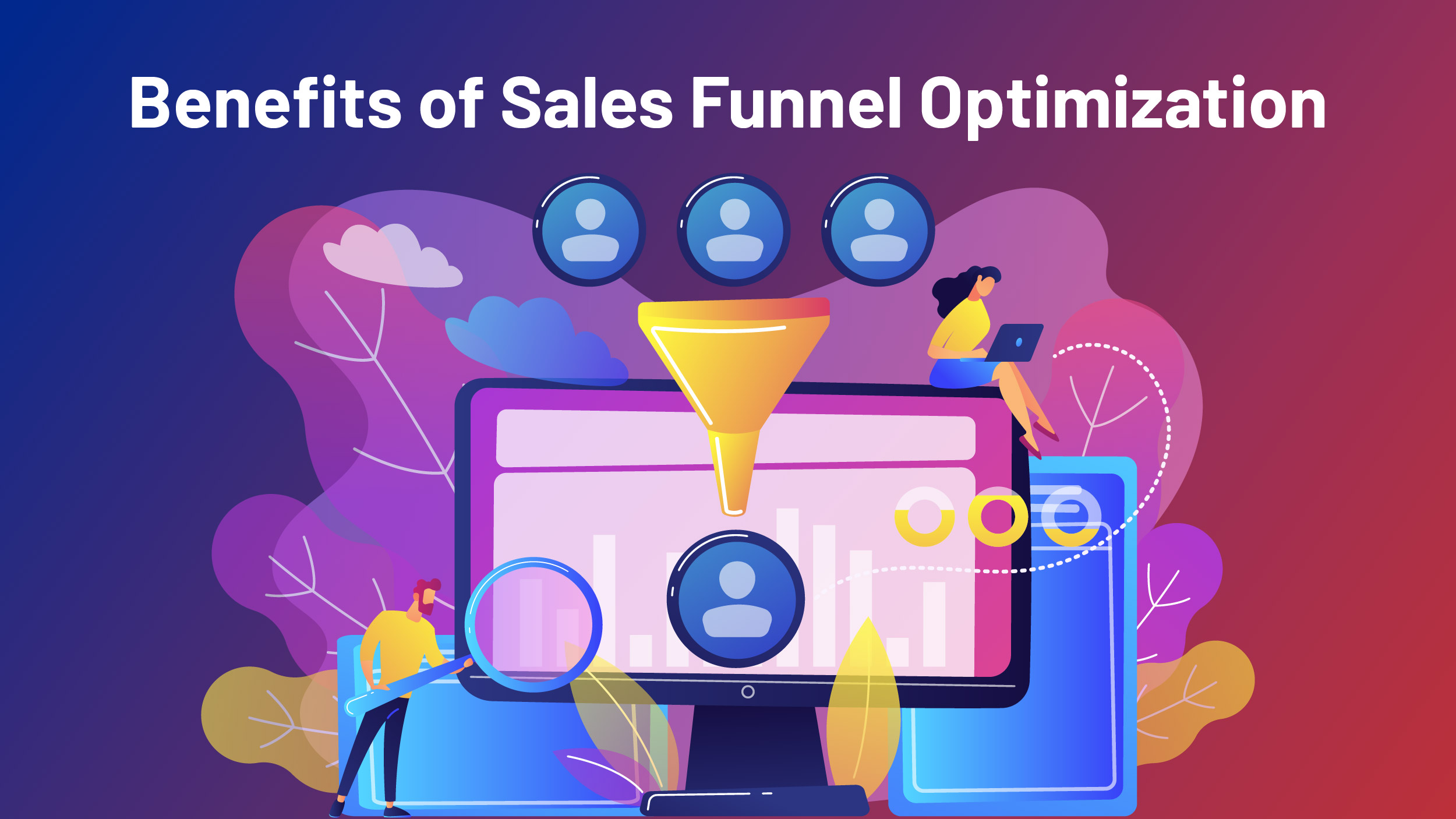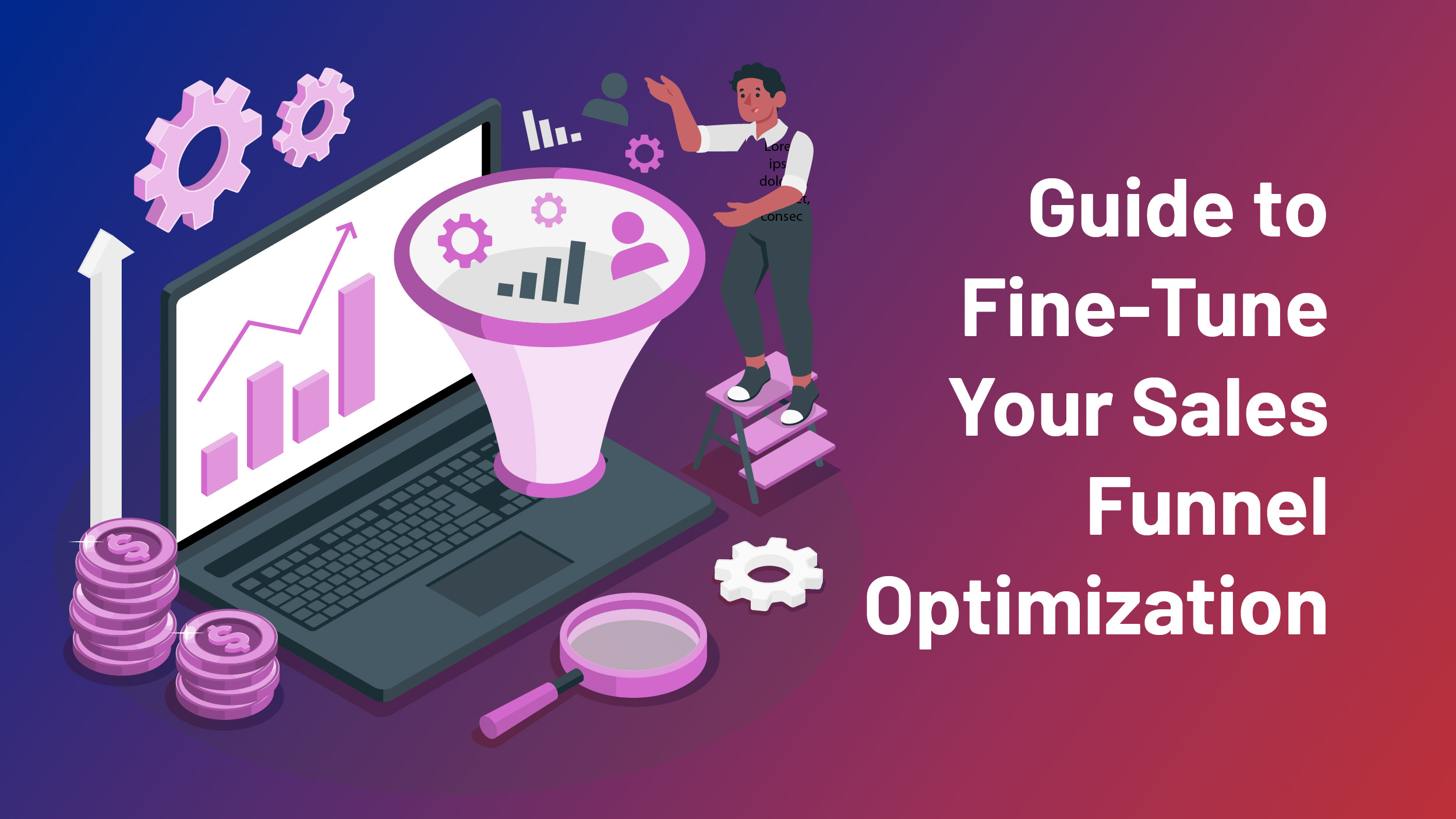Knowing and understanding the importance and benefits of sales funnel optimization can take your online sales to the next level. Your success is determined by how well you guide prospects through the buyer’s journey, from awareness to purchase. Fine-tuning a sales funnel and its stages for maximum acquisition, retention of potential customers, and conversion, is known as funnel optimization.
A sales funnel can never be flawless, but that doesn’t mean you cannot influence your potential buyers’ purchasing decisions to increase your sales funnel conversion rate. However, your traffic-generating or marketing strategies still won’t matter because half of your prospects will not be ready to convert at that point. That’s when funnel optimization comes into play.
What is a Sales Funnel?
A sales funnel, also referred to as a conversion funnel, outlines a potential customer’s journey from their initial interaction with a business to the point of making a purchase.
These funnels serve to delineate marketing strategies and track interactions throughout the customer lifecycle. They offer deeper insights into customer behavior and aid in pinpointing obstacles in the purchasing process, ultimately enhancing conversion rates.
By constructing a sales funnel optimization, you can shape purchasing decisions without direct intervention. Regardless of whether you operate online, offline, in B2B, or B2C markets, a well-tailored sales funnel can help you:
- Identify both successful and problematic stages in your sales process.
- Enhance your content marketing strategy.
- Boost conversion rates.
- Cultivate customer loyalty and elevate retention rates.
Benefits of Sales Funnel Optimization
 There are four stages in a funnel namely, Awareness, Interest, Desire, and Purchase. The end goal is always to convert a lead into a customer by encouraging them to take the required action. It won’t be wrong to say that if you don’t optimize your sales funnel you can lose prospects that could have turned into legitimate clients (buyers) due to any reason.
There are four stages in a funnel namely, Awareness, Interest, Desire, and Purchase. The end goal is always to convert a lead into a customer by encouraging them to take the required action. It won’t be wrong to say that if you don’t optimize your sales funnel you can lose prospects that could have turned into legitimate clients (buyers) due to any reason.
As a marketer, there are hardly a few things more infuriating than knowing that your efforts could have been more effective in a particular sales stage. A prospect’s buying decision can be influenced, and your conversion rate can be improved, which is why it’s such a vital aspect of your whole sales and marketing strategy.
You’ll be able to convert a better percentage of prospects if you discover how to enhance and optimize each stage of your sales funnel. To improve and optimize your sales funnel, you must be able to imagine it and use it as a framework for analyzing and identifying opportunities. The following are the benefits of rightfully optimizing your sales funnel:
- Proper sales funnel optimization ensures a higher percentage of prospects are completing the entire funnel.
- It is the best way to help determine the best marketing approach and to ensure that you are targeting the right audience at the right time in their buyer journey.
- It creates an awareness of why your product or service isn’t suitable for all of your prospects. And further allows you to develop ideal solutions to meet their requirements.
- Sales funnel optimization gives you an edge over your competitors who aren’t investing the time and resources into funnel optimization.
- Sales funnel optimization is what every company should practice. If you don’t invest time in funnel optimization there’s a risk of you losing business to your competitors. It’s important to learn what a sales funnel is and how to create one that is suitable for your business, works right for you, and helps you boost your conversion rates.
Guide to Fine-Tune Your Sales Funnel Optimization
 Optimizing your sales funnel is essential for maximizing conversions and revenue. Here are steps you can take to effectively optimize your sales funnel:
Optimizing your sales funnel is essential for maximizing conversions and revenue. Here are steps you can take to effectively optimize your sales funnel:
1. Identify Your Target Market
Understand audience preferences for effective selling. Create research-based buyer personas, revealing insights for targeting and boosting conversions. Gather data from sources like Google Analytics, social media, and customer databases, focusing on key factors. Use this data to outline and build multiple personas.
2. Create Content That Address Issues
Informative content builds brand credibility and expertise. Research by Conductor shows consumers are 131% more likely to buy after consuming educational content.
Blog posts optimize the Awareness stage of your sales funnel. Consider options like social media posts and podcasts; 57% of U.S. consumers above age 12 listen to podcasts as of 2021.
3. Leverage Email Marketing To Foster Leads
To drive sales funnel optimization and progress customers, implement effective email marketing strategies. Despite misconceptions, email remains a powerful sales channel. HubSpot‘s research shows that 64% of small businesses effectively utilize email marketing.
4. Streamline the Conversion Process
To ensure successful conversions, nurture prospects and build trust. However, even with the best leads, caution is key to avoid drop-offs.
A study by the Baymard Institute found that 69.82% of online shoppers abandon purchases due to:
- High fees (shipping, tax, etc.)
- Lack of guest checkout option
- Slow delivery
- Trust issues
Each of these is a potential friction point in the conversion process, offering an opportunity for optimization. Here are four tips:
- Avoid mandatory sign-up during checkout; reserve it for the “Thank you” page.
- Implement a one-page checkout to reduce steps.
- Offer free delivery by incorporating costs into product margins.
- Display trust signals like payment logos and security badges on the checkout page and site footer.
5. Keep a Consistent Social Media Presence
Social media is a powerful tool for optimizing your sales funnel. With 72% of U.S. adults using social media daily, it’s a valuable platform for targeting prospects at every stage, according to the Pew Research Center. Use eye-catching visuals and engaging videos to capture attention and drive awareness.
In the Interest stage, leverage platforms like Facebook, Instagram, and Pinterest ads to direct traffic to your website. Implement tracking pixels for retargeting in the Desire phase, offering special discounts.
For the Action stage, deploy conversion-focused ads to prompt purchases. Utilize features like Instagram’s Shop and Facebook Marketplace to streamline conversions on social media.
Remember, sales funnels require nurturing; focus on gradual, meaningful progress. Adapt your strategies to suit evolving customer preferences.
Final Thoughts: Sales Funnel Optimization for Enhanced Conversions
Conversion objectives differ significantly at each stage of the sales funnel. Remember, the goal isn’t to convert leads immediately. Avoid pressuring users to take action. Instead, enhance your sales funnel to facilitate their natural progression.
Emphasize small, consistent micro-conversions at each stage and adapt your content to address evolving customer needs throughout the buying journey.


Comments are closed.